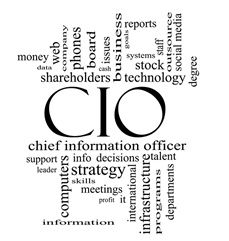 In a blog post on the changes in (digital) marketing budget allocation, I mentioned how the CMO and other managers and executives will have to learn more about technology and the social and digital tools their customers and employees increasingly use.
In a blog post on the changes in (digital) marketing budget allocation, I mentioned how the CMO and other managers and executives will have to learn more about technology and the social and digital tools their customers and employees increasingly use.
The truth is that this is just the beginning: in the third platform area of digital transformation, the skillset regarding technology, data and so-called disruptive digital technologies will have to become part of the corporate culture.
The CMO and CIO are allies in this evolution. And although we talk a lot about the gap between the CMO and the CIO, the truth is that this gap is often exaggerated and closing. In many organizations the gap between sales and marketing is bigger than that between the CMO and CIO or marketing and IT. Bridging these (and many more) gaps is an essential part of a digital transformation strategy.
Digital transformation and the decision about technology for marketing
It’s clear that in the years to come the technology and IT budget will not just belong to the CIO anymore and that major parts of the marketing technology buying decisions are moving to the CMO. Think about investments in CRM, the continuously growing marketing automation space, data and analytics (Big Data is one of the hardest areas in this regard), the cloud computing marketing and sales stack etc. And let’s not forget information in general as the driver of innovation, insights, interactions (what content marketing is partially about), collaboration and so much more.
But ownership is a futile debate. It’s about partnership and the forward-thinking CIO knows it sometimes better than the CMO. Let’s face it: the pressure from ‘the business’ and the CMO on IT and the CIO is huge and requires a higher degree of business agility. However, at the same time, the CMO has quite some catching up to do as well: with the customer and employee reality. And the CMO needs to understand the evolving role of the CIO too.
Nowadays, everyone in the business is getting into a marketing role. And everyone in the business is in IT in a sense as well. Aligning business and customer goals and assuring great customer experiences is everyone’s task. The CMO will increasingly become responsible for the (digital) customer experience, even if some organizations have created (temporary?) functions such as the Chief Customer Officer (that can make sense). Digital transformation and integration also mean closer connections with others in the organization that have a clear role in the technological evolutions.
So, this role will be shared within and even beyond the organization with the CIO certainly being partner. In fact, the CIO also will watch over the customer experience, be it in a much broader context, namely the customers as all stakeholders in the digital corporate ecosystem: employees, partners, buyers, vendors and much more. He becomes a manager of enablement with a clear focus on IT services and – indeed – being of service, driven by business and customer goals.
IT is moving to this enablement and service function (again). From the back-end to the front-end (after having made the opposite move when ERP came around).
The CIOs role is becoming one of managing the relationships with all providers and internal and external customers where IT and digital technology come into play in that famous third platform area of cloud-based, mobile-driven and data-intensive pervasive or ubiquitous technology. And the customer experience is a driver in it, as it is in closing the proverbial gap between IT and marketing.
CMO and CIO: creating the partnerships in function of business and customer goals
In order to create great partnerships with the CIO and creating a digital and social culture, the CMO has a responsibility of learning, collaborating, understanding and empowering as well. Social and digital are a reality and so is the connected buyer’s journey. Accept it and look at how you can serve your customers better taking all this into account. In the end, that’s what the CIO will do too. But you can’t do it without a customer-centric or, as Forrester likes to call it, customer-obsessive, attitude. The same attitude and role the CIO will have in enabling innovation and transformation.
The message for the CMO is clear:
- Understand, use and enable social and digital technology to keep up pace with your customers and ecosystems.
- Foster strong partnerships with innovative and service-oriented CIOs to facilitate a people-oriented digital transformation with clear goals and involvement of all stakeholders.
- Understand that integrated marketing is about customer experiences and the customer in general but also about integrating marketing within the broader business context of other departments, connected systems, aligned processes, etc.
- Start preparing yourself to enable and ‘manage’ the – increasingly – digital, social, mobile and ubiquitous customer experience. Because the customer experience in the broadest sense is what this digital transformation is all about to start with.
Soon being customer-adaptive and responsive will not be enough anymore so it’s really time to catch up. And look at the evolutions in the role of IT and the CIO. They are closer to marketing than many think.

Images purchased under license from Shutterstock

